Photography Tom Craig
Creative direction and styling Dan May
Models Lucas Ucedo at LA Models and Alida Sikder at PHOTO/GENICS
Special thanks Tao Ruspoli and Brian McGrory
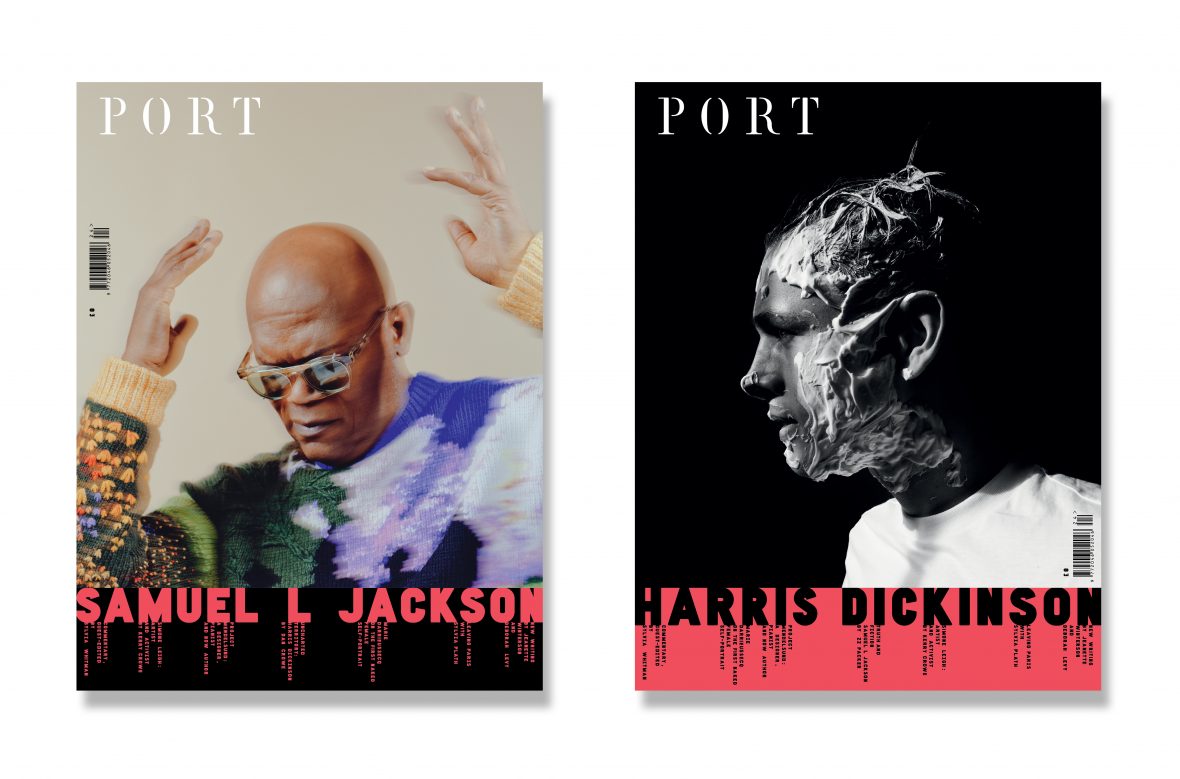
This article is taken from issue 24. To buy the issue or subscribe, click here
Subscribe to Port Magazine annually and receive each issue to your door.
Get PORT in printSubscribe to Port Magazine annually and receive each issue to your door.
Get PORT in print
Photography Tom Craig
Creative direction and styling Dan May
Models Lucas Ucedo at LA Models and Alida Sikder at PHOTO/GENICS
Special thanks Tao Ruspoli and Brian McGrory

This article is taken from issue 24. To buy the issue or subscribe, click here
Spanning continents and genres, Vincent Cassel is the global breakout star of pioneering French Cinema. Where he leads, others follow. Port travels to Paris to meet him.
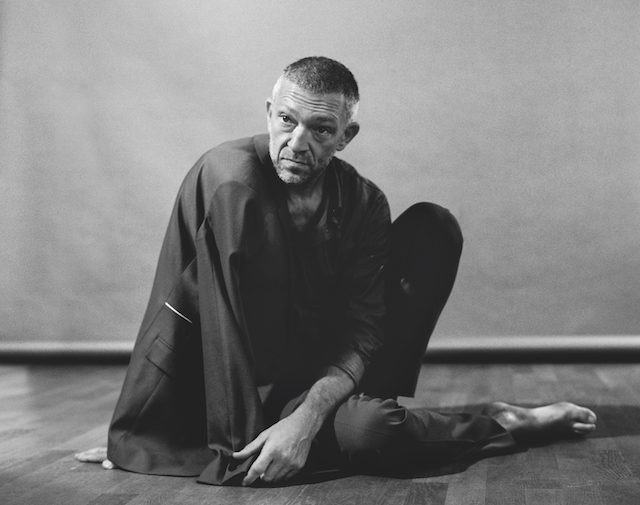
On a humid day in late May, at a photography studio in the 17th arrondissement, the windows have been flung wide open. Vincent Cassel, bearded and barefoot, is at home in these conditions – until recently he lived in Rio de Janeiro, where humidity rarely drops below 80 per cent – and on set he is charming and unguarded, laughing easily with the crew.
In this era of Hollywood’s international dominance, the Gallic actor is a quietly global film star. Now 51 – though he looks at least 10 years younger – and fluent in four languages (French, Italian, English and Portuguese), Cassel’s career has spanned cultures and continents. “I’ve always thought an actor should be able to feel comfortable in any situation,” he says when we speak after the shoot, drawing on an e-cigarette. “It’s about being flexible and open to new things, new languages, new people, new places.”
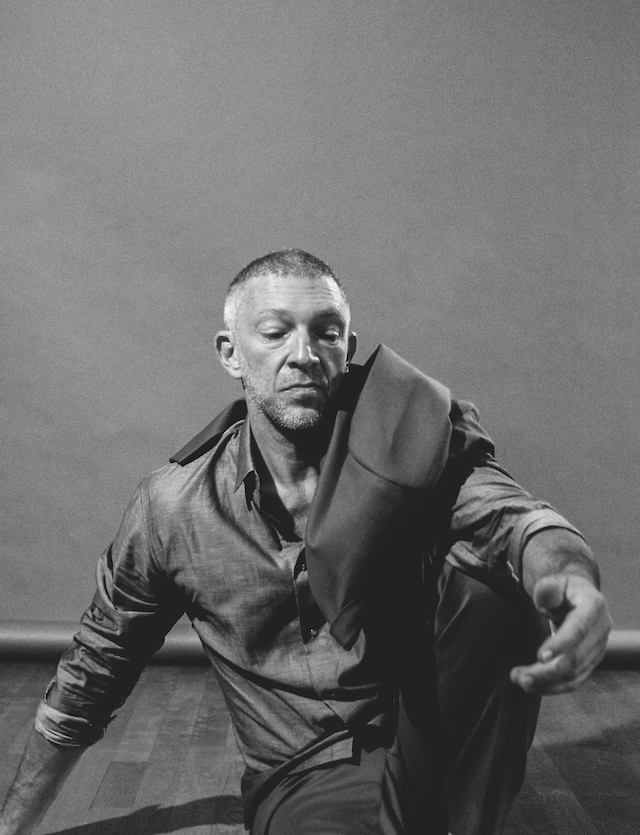
To truly understand Cassel, it is necessary view him from these different perspectives. In France, for example, he is one of the country’s best-loved actors, remembered as the angry teenager of the mid-’90s banlieue classic La Haine and public enemy number one in Mesrine, as well as being – alongside Italian art-house pinup Monica Bellucci – one half of the Millennium-era power couple of European cinema. To the Anglophone world, he is the lithe master thief of Ocean’s Twelve and Natalie Portman’s predatory ballet teacher in Black Swan, while in Cassel’s adopted country, Brazil, he is the eccentric Frenchman who has learnt their language, and the balletic native martial art of capoeira, appearing occasionally on television and the big screen. He is even known in Korea, where he is soon to play the head of the International Monetary Fund in Sovereign Default.
And yet, expecting to meet any one of these dark, brooding screen icons in Paris, I am surprised to find myself confronted instead by the easygoing, sun-kissed Cassel of Instagram, who surfs in Biarritz and Rio, jams with samba bands and hangs out with Tina Kunakey, the 21-year-old model who recently became his wife. There is little sign of the unhinged characters that exist on the fringes of society, the edge of sanity, for which he has become known. Only once – staring deep into the camera, his expressive shoulders hunched, face set and fierce – do I see a flicker of the wild violence the actor has a particular ability to evoke.
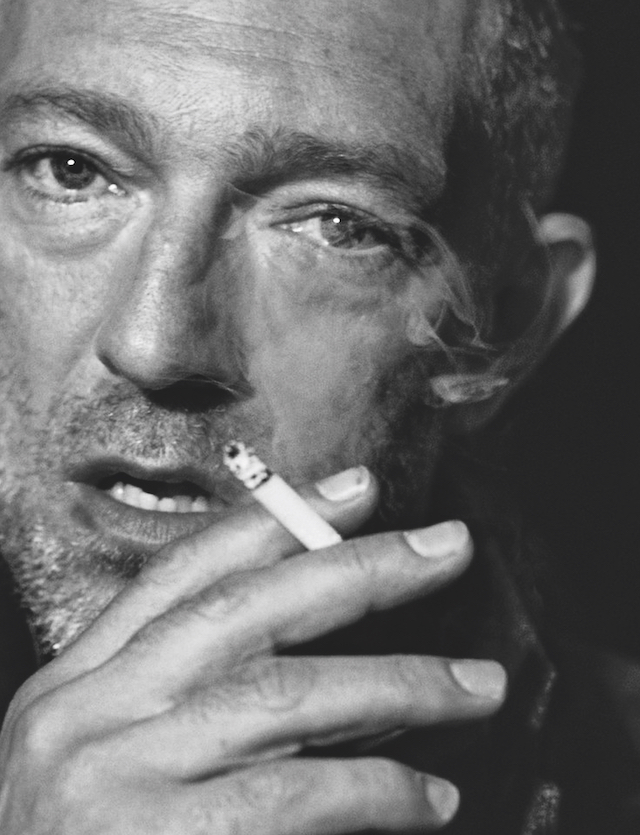
Cassel was born Vincent Crochon in 1966, the son of journalist Sabine Litique and the charming tap-dancing star of 1960s French cinema, Jean-Pierre Cassel, to whom Cassel Junior spent much of his early life in opposition. After running away from several boarding schools – (“If you don’t run away from boarding school, there’s a problem with you”) – including a Catholic institution, where he became an atheist, Cassel joined a circus school. It was a move that would go on to serve a higher purpose – an ultimate act of rebellion against a father who prohibited his son from following in his footsteps.
“I really did the circus training, the dancing, to become an actor,” Cassel tells me. “When you do a sequence of acrobatics, you can’t stop in the middle. You do, say, a backflip somersault” – he is explaining with his hands – “and you have to commit to your decision, otherwise you’ll break your neck. In the same way, you enter your scene: You trust in the other actors; you believe in what you are doing.”
Following minor parts in small features and television films, Cassel would be introduced to French audiences as the troubled Jewish youth Vinz in the critically acclaimed La Haine (Hate). Released in 1995, La Haine captured a moment of national turmoil: strikes provoked by austerity measures and the country still recovering from rioting that had erupted in the deprived, isolated housing estates around Paris, where the film is set. There, Vinz and his two friends, Saïd, of Maghrebian descent, and Hubert, an Afro-French boxer, live, joke, fight and, in the case of Vinz, die in such a convincing depiction of the troubled suburbs that Alain Juppé, France’s prime minister at the time, screened it to his cabinet.
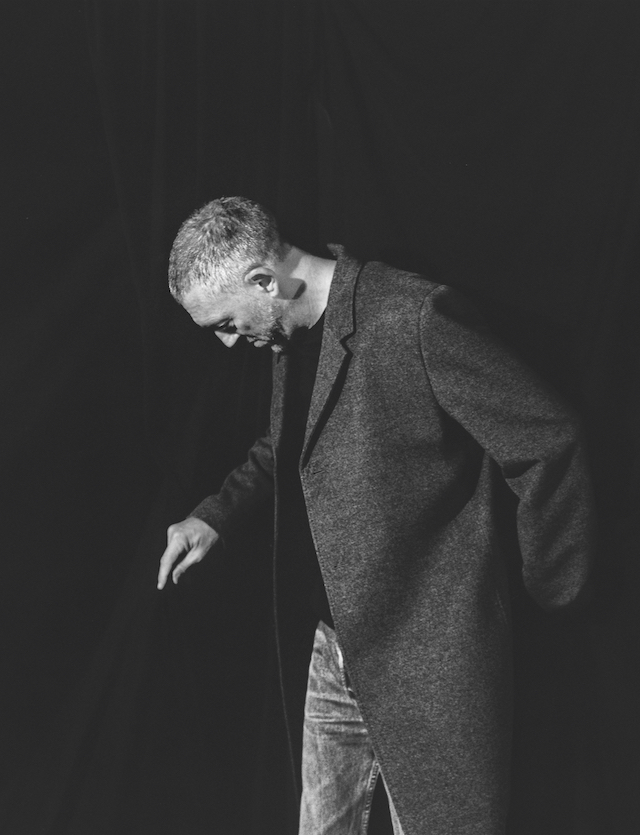
Together with Kim Chapiron and Romain Gavras, La Haine’s director Mathieu Kassovitz formed Kourtrajmé, an iconoclastic DIY collective which radicalised French cinema in the 1990s and early 2000s. Producing, at first, short films by any means they could, they threw off the mantle of France’s by then long-established cinematic heritage. Or as Cassel – who Gavras describes as the collective’s godfather – once famously put it: “Fuck the nouvelle vague.”
Cassel laughs. “I was much younger then, but the nouvelle vague was such a huge shadow to be under in France.”
More so for you, with your father’s reputation?
“I was overwhelmed. He was well known, he was talented, he was charismatic. For years I totally refused to work with anyone of his generation. That was my rule.”
La Haine would be followed by L’Appartement, on which he would meet Bellucci; Chapiron’s disturbing Sheitan, with Cassel playing a Satan-worshipping shepherd; and Irreversible, Gaspar Noé’s harrowing masterpiece, featuring scenes that move backwards rather than forwards in time – among them, notoriously, one of the most traumatising and unwatchable in world cinema: a 10-minute long-shot rape in an underpass.
Cassel wouldn’t break his rule until 2008, over a decade after La Haine.
“The first time I decided to work with my father was for Mesrine,” he tells me, candidly. “He was going to play my father in the movie, but he died before we began shooting.” It has started to rain, the sound rising up with the warm air to fill the studio, damp and clean. “For the movie I had gained weight, I wore wigs and lenses in my eyes. I was totally changed. I thought ‘I’ve never looked so like my father.’ I realised: ‘OK, it’s the end of the war. I have to let it go now.’”
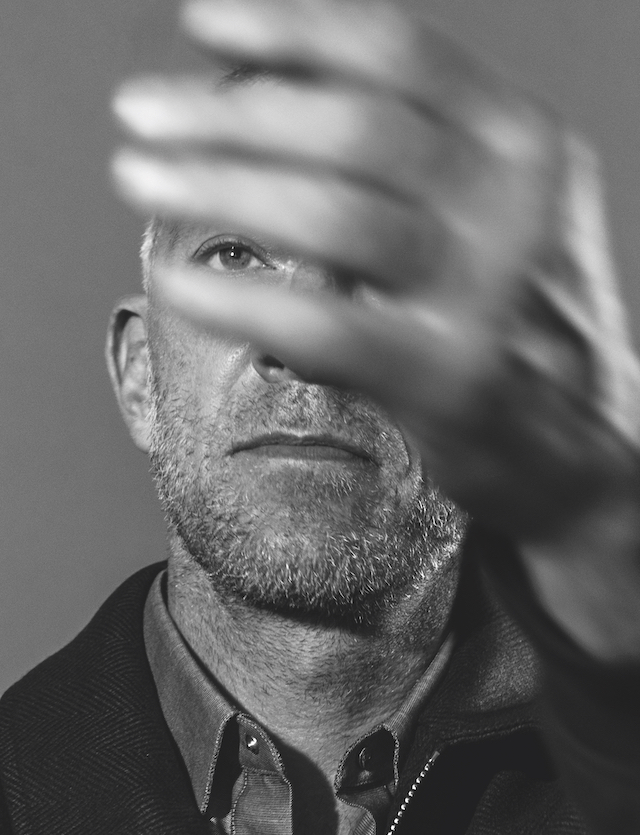
After five years in Brazil, Cassel is moving back to Paris to be closer to his children, Deva, 13, and Léonie, 8, where they live with their mother – he and Bellucci separated in 2013. Cassel had to renounce his Brazilian citizenship: “I’ve become French again, does it show?” But one gets a sense the vibrant South American country will always be his spiritual home.
“If you’ve been, you don’t ask why,” he tells me, when I question what continues to draw him there. “It’s a love story. It goes deeper than whether or not I have citizenship.” He’s excited, speaking quickly. “There’s an energy there, a blurred space where anything can happen. When everything is too codified, I feel trapped.”
I suggest there is a similar energy and intensity in the characters he plays. Cassel half agrees. After all, over the past 25 years he has featured in an eclectic range of films – rom-coms, action, experimental arthouse, horror, westerns, animations – and he appears as at-home in commercial blockbusters as he does in intellectual dramas. But it is also true that the performances that have marked Cassel out as a commanding, nuanced actor are those in which he grapples with a moment of deep psychological torment, driven to extremes of emotion.
“I’ve always been drawn to that moment of drama,” he says. “To seek out that struggle: what you would fight for, or are scared of. Through movies you can experience those things that you don’t want to experience in real life.”
“I love the process of putting that together,” Cassel continues, smiling and expansive. “Watching people, building a character, ensuring what you’re doing is believable. It’s not a job, it’s not work – it’s a great pastime.”
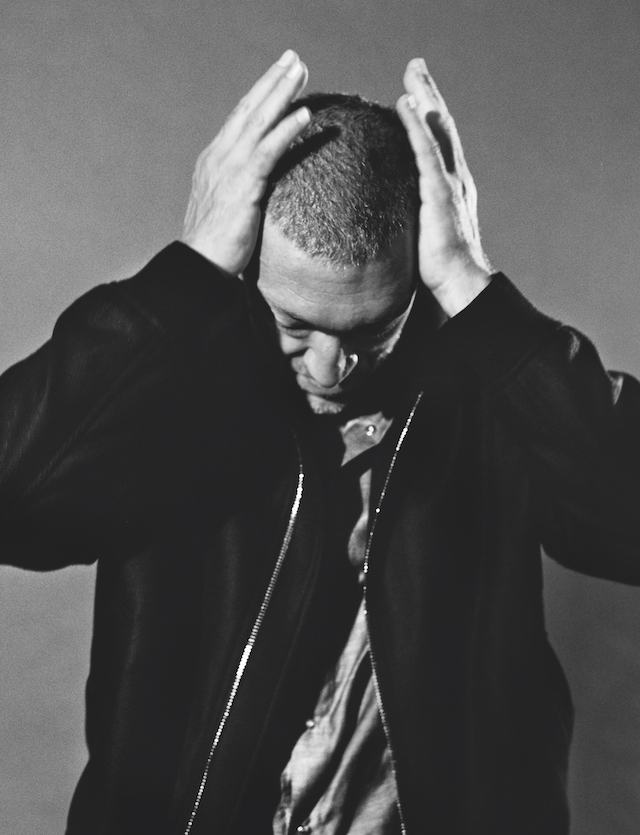
Though he physically immerses himself in his roles – shaving his head, gaining or losing weight – he is refreshingly down-to-earth about making films: He is no method actor. Instead, he builds his parts through an external understanding of physicality and psychology: “Your character should be recognisable from the other side of the street, from his back, just from the way he moves, the clothes he wears.” When I ask whether, for example, he learned to paint for Gauguin, he is frank.
“I started to paint just to not look stupid. As an actor, you have to pretend to do things you don’t really do – but it’s always quite superficial.” He laughs. “You end up knowing a lot of things about a lot of things, but nothing very deeply. But then my craft is in constructing things that are totally fake.”
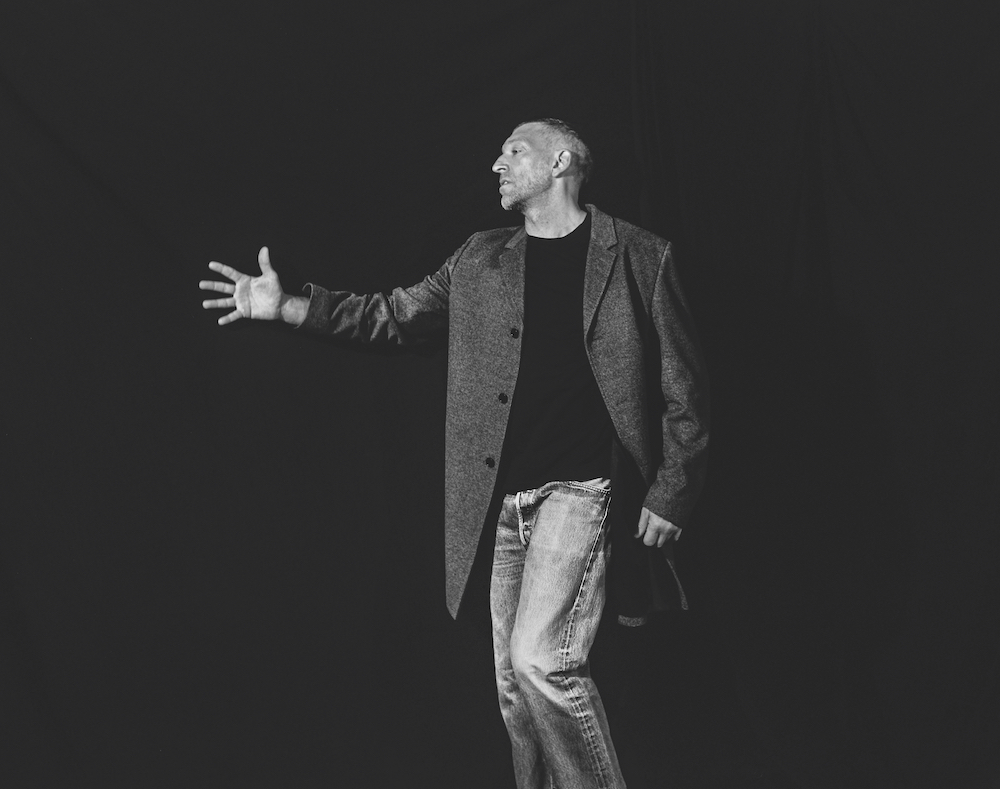
“I was talking to my friend, the actor Louis Garrel. He was telling me that movie-making was like a documentary on life, and I said no – movie-making is actually totally fake and you have to make it real. It’s not about filming reality. When I go through these intense emotional moments in my own life – it could be the birth of my child or the death of my father – I’ve always gone outside myself and watched how I have reacted. Most of the time I think ‘Fuck, I would not have played it like that.’”
Despite what may be suggested on social media, where he is rarely away from the beach, Cassel has been busy. Alongside Sovereign Default, his four other films out this year include the cop drama Fleuve Noir, Gavras’s The World is Yours and a Brazilian film, The Great Mystical Circus (with the last two screening at Cannes), as well as L’Empereur de Paris, a Napoleonic-era crime thriller, currently in post-production. It’s a typically Cassel-ian mixture of genre, language and style and represents the culmination of a period of intense work following his divorce from Bellucci. The separation, at least according to the line followed by both parties in the press, was amiable and mutual, but, after 14 years of marriage, it was enough to throw Cassel off balance.
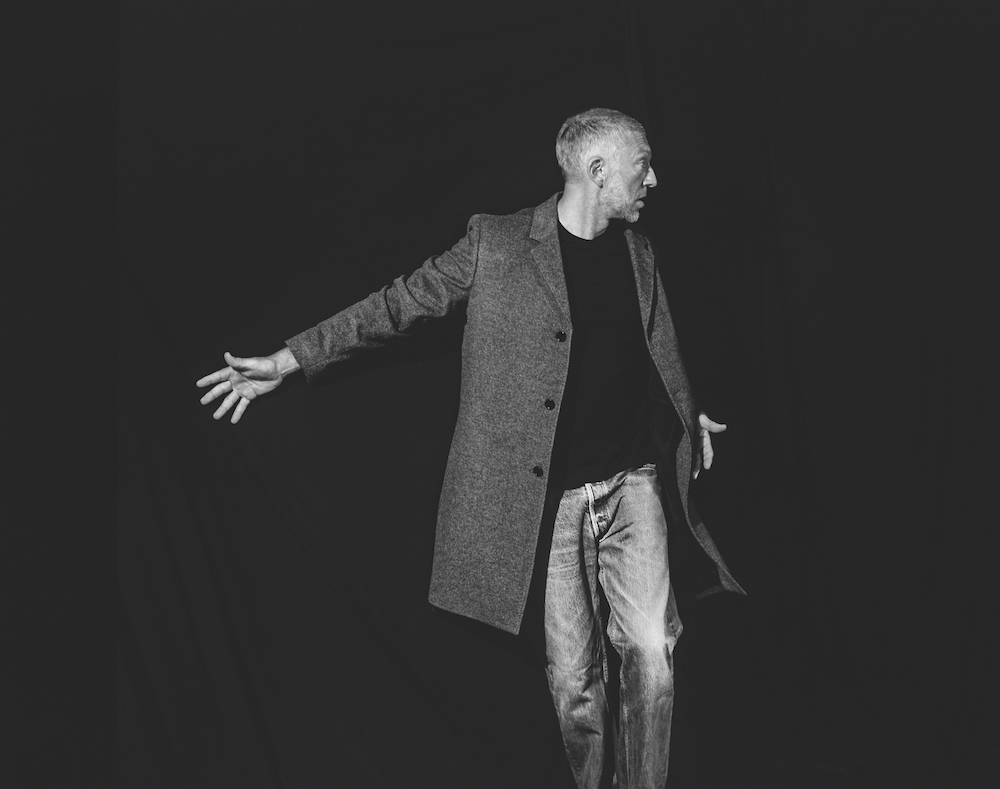
“Everything was changing around me,” he explains. “I knew I would need to feel strong in myself and I feel strong when I act, so I worked almost non-stop for the past two years, and now things are going to be released.”
It seems to have paid off. The Cassel I meet in the studio is content and enjoying life. He seems unconcerned by celebrity, critical success or those who take issue with the fact that his new wife – whom he married at the end of August in an intimate ceremony near Biarritz – is 30 years younger than him. He is unpretentious and grounded – an actor by choice, rather than a sense of destiny – but brings an uninhibited enthusiasm to everything he does. If there is any connection between this jet-setting, happy-go-lucky Cassel and the disturbed, villainous characters he plays, it is that they share this passion, only on screen it is inverted, twisted into arresting performances that probe the depths of human experience. “Well,” as Cassel says, “it would be boring otherwise.”
The interview finishes and Cassel hops on to a motor scooter to speed home through the damp Parisian streets: His children are living with him for the week and he has just installed a trapeze in his house – they are learning tricks from YouTube. I’m reminded of something he said earlier, the secret of his vitality: “I have a new rule now: Whatever you’re doing, whatever situation you’re in, you just have to keep it fun.”
Words George Upton
Photography Laura Marie Cieplik
Fashion direction Dan May
Styling Camille-Joséphine Teisseire
Styling assistant Céline Gaulhiac
Talent Vincent Cassel @ Agence Contact
Casting direction V&Y Casting
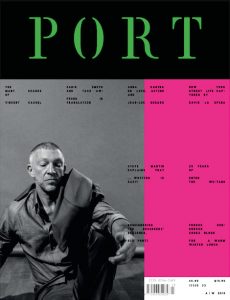
This article is taken from issue 23. To buy the issue or subscribe, click here.
The Spring/Summer 2018 issue of Port – featuring writer Chimamanda Ngozi Adichie, Dutch garden designer Piet Oudolf and David Hallberg, the greatest male dancer of his generation – is out now
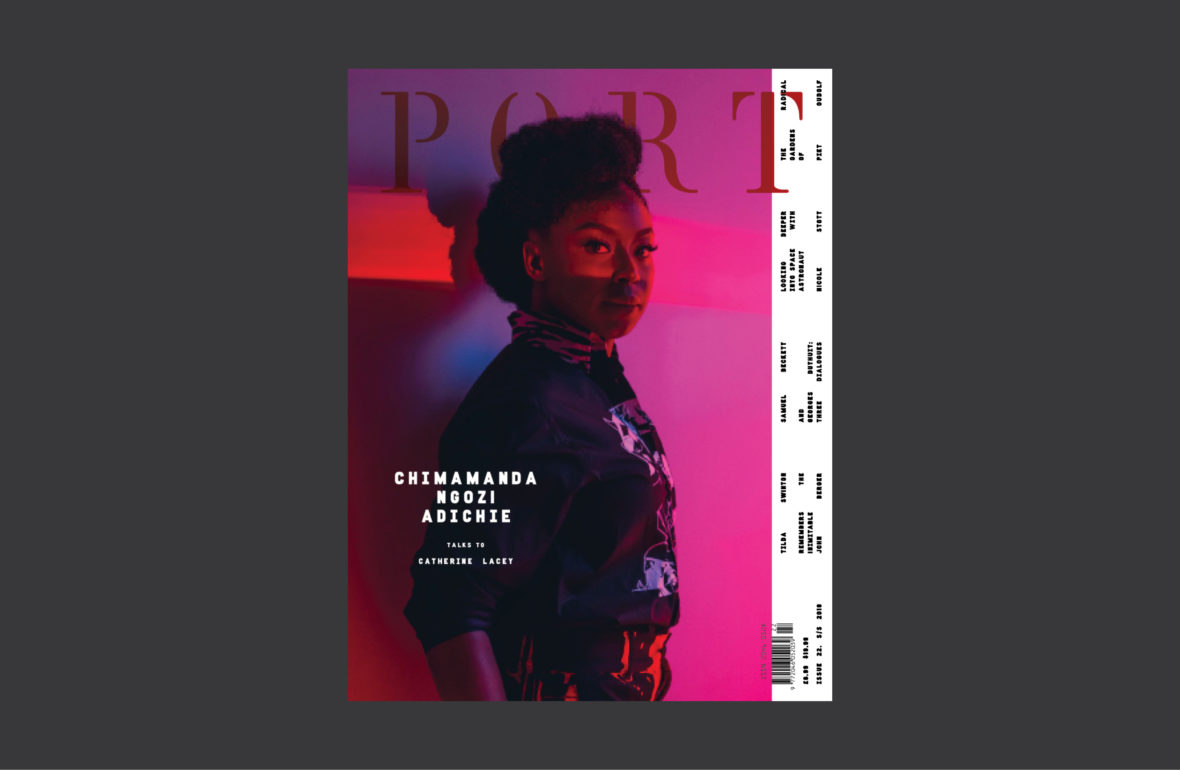
Writer Chimamanda Ngozi Adichie is one of the foremost intellectual voices in the United States today. The author of Half of a Yellow Sun, Purple Hibiscus and Americanah – as well as of one of the most-viewed Ted talks ever, sampled by Beyoncé, no less – Adichie transcends the barriers between literature, art and music. For the cover story of Port issue 22, she met Catherine Lacey in Washington DC to discuss her extraordinary books, the complexity of recent gender movements and to give a hint at a next big project.
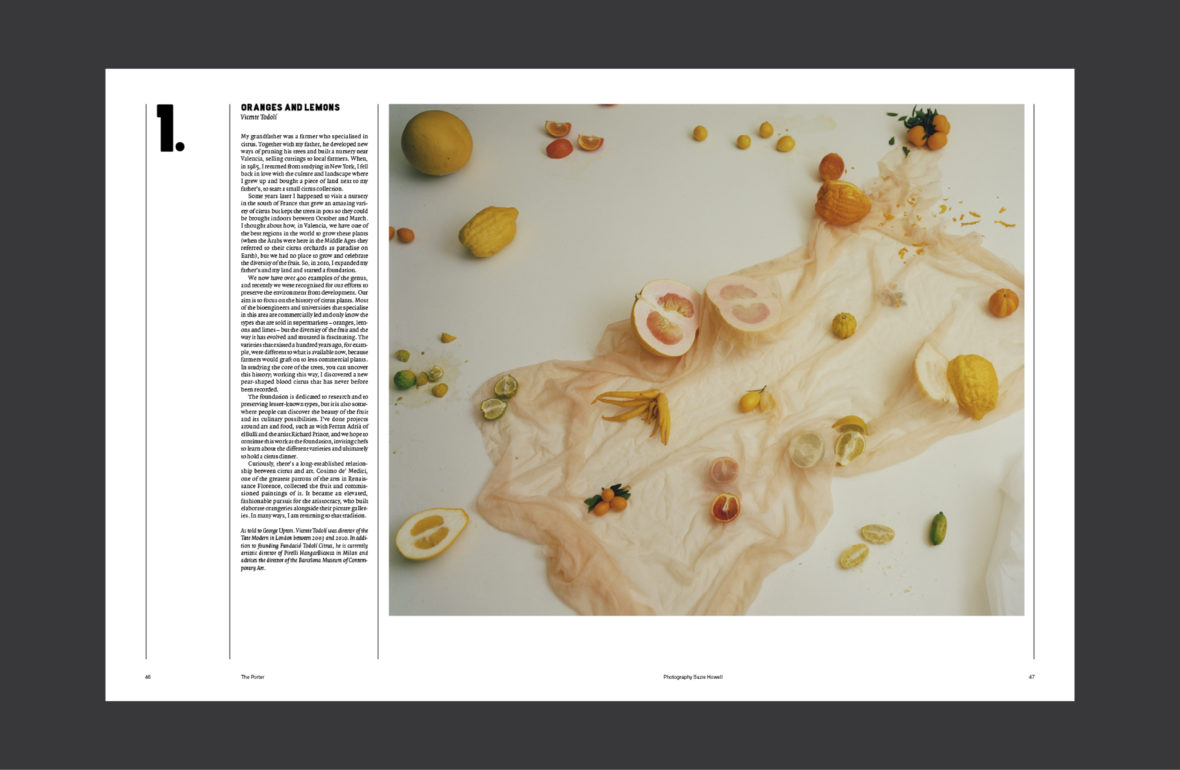
Elsewhere in the magazine, we speak to 6a – the most exciting architecture practice in London; discuss Netflix and race with the director of Mudbound, Dee Rees; and travel to rural Netherlands to meet the pioneering Dutch garden designer Piet Oudolf. Also featured: The photographer Christopher Payne visits one of the largest flag factories in the US, and we uncover the secrets and beauty of space with astronaut Nicole Stott.
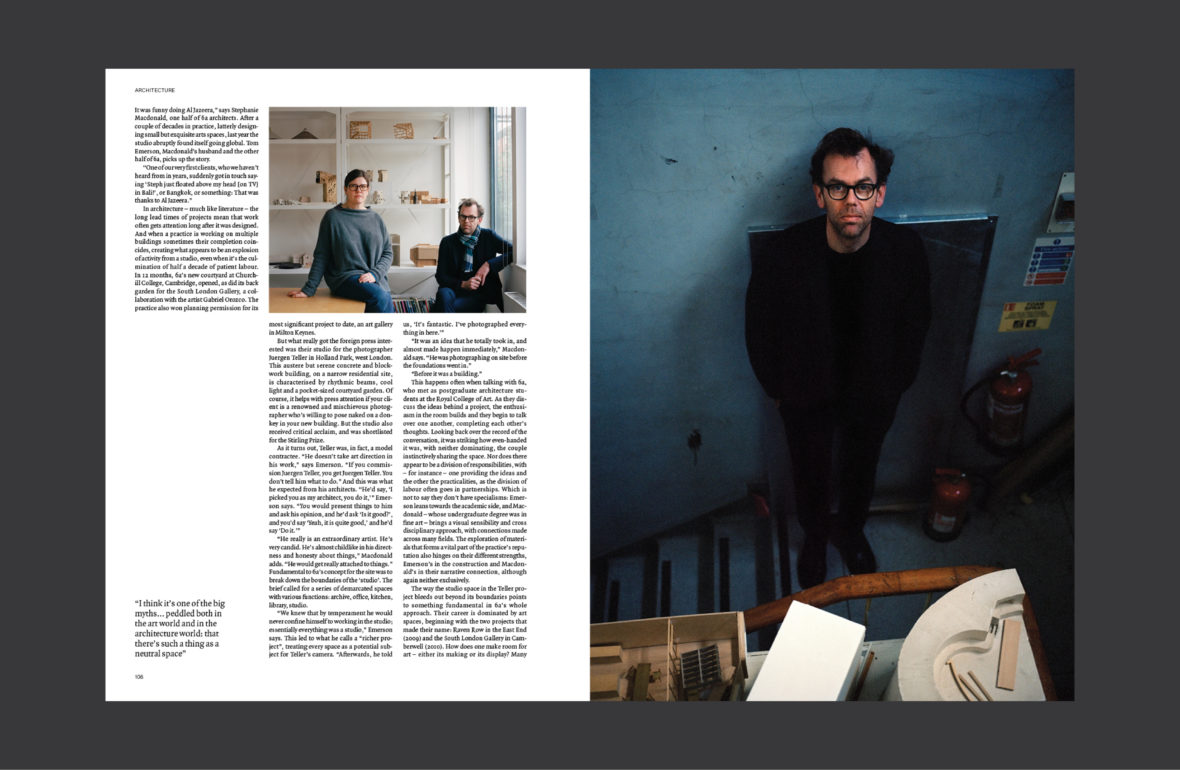
In the fashion section, celebrated photographer Kalpesh Lathigra and Port‘s fashion director Dan May travel to Mumbai to shoot a 40-page story around the sprawling, seaside city; Scott Stephenson styles this season’s collections and Pari Dukovic shoots the greatest male dancer in the world, David Hallberg, wearing Saint Laurent.
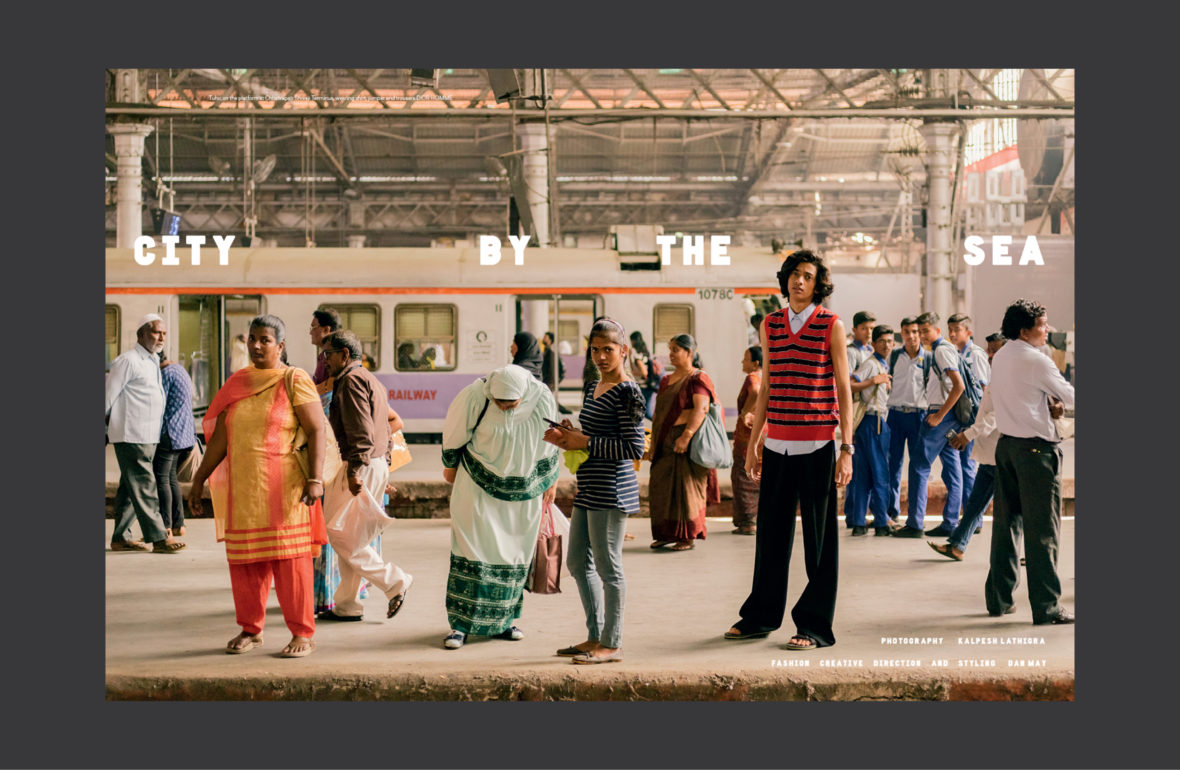
Commentary pieces come courtesy of Will Self, Lisa Halliday and Jesse Ball, as well as Samuel Beckett‘s seminal Three Dialogues with Georges Duthuit. Highlights from the Porter include Tilda Swinton remembering her friend John Berger; an interview with the British artist Gavin Turk; foraging with chef Nicholas Balfe; and ex-director of the Tate Modern, Vicente Todolí, on his passion for citrus fruits.
To buy Port issue 22, click here.
In 2017, Alex Thomson became the fastest British sailor to complete the Vendée Globe. Here, Thomson and designer Konstantin Grcic reflect on their unique nautical partnership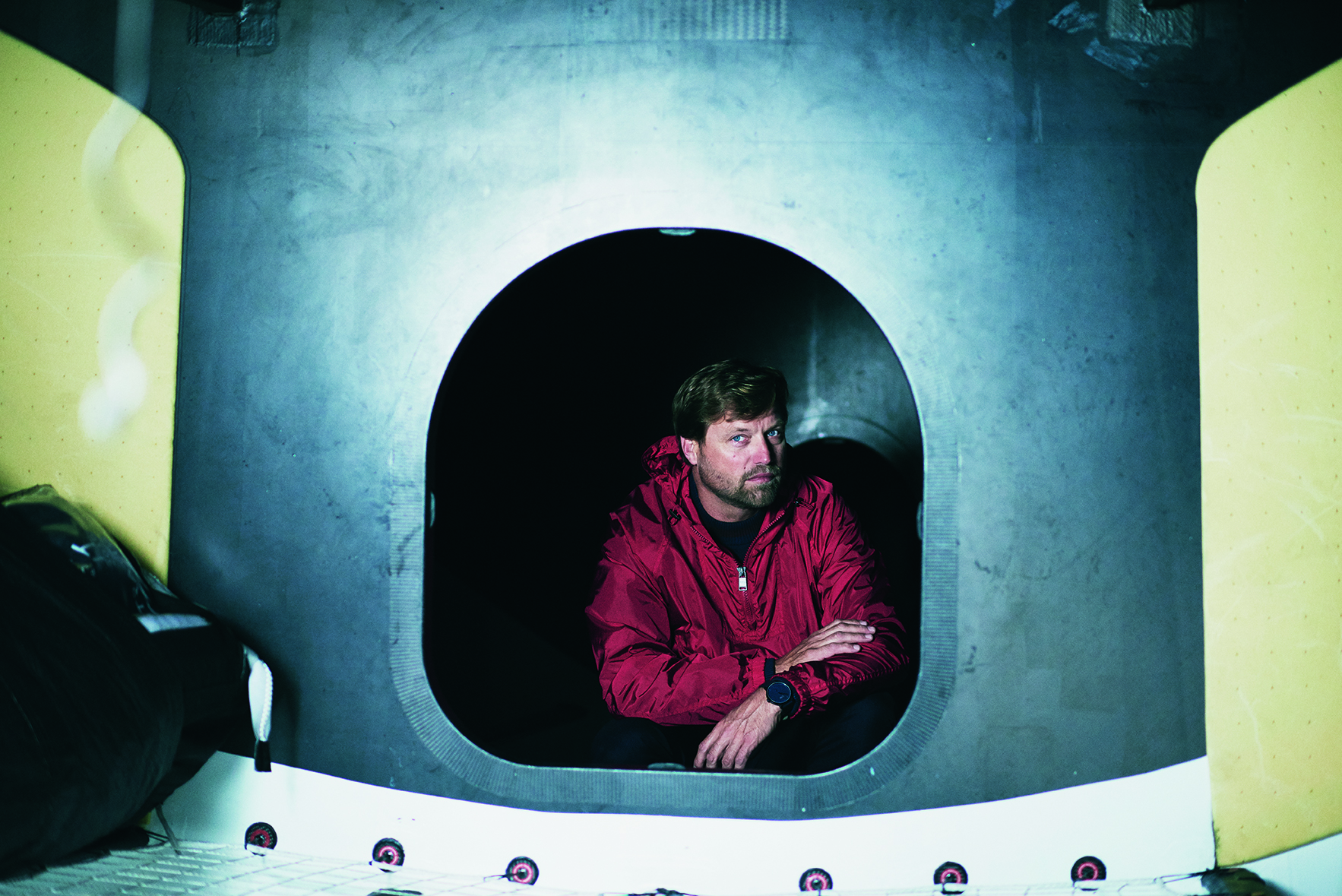
On 20th January 2017, after 74 days, 19 hours and 35 minutes alone at sea, Alex Thomson reached the finish line of the Vendée Globe – the gruelling, round-the-world solo yacht race. Although he arrived in the harbour of Les Sables d’Olonne, on the west coast of France, in second place, 16 hours after Frenchman Armel Le Cléac’h, Thomson became the fastest British sailor to complete the course, despite having lost one of his foils – the wings that lift the boat out of the water to minimise drag – on day 13.
Established in 1989, and running every four years since 1992, the Vendée Globe is the most demanding boat race on the planet – on average only half of the entrants will reach the finish line. An extreme test of endurance as well as of seamanship, Thomson – for whom this was his fourth attempt, having retired from the race in 2004 and 2008, and coming third in 2012 – had to snatch between 20 and 40 minutes sleep every three to five hours. Despite consuming up to 7000 calories a day, he would lose nearly eight kilograms over the course of the race.
For the most recent edition, Thomson and his sponsors, Hugo Boss, took the unusual step of partnering with the London-based German designer Konstantin Grcic. In addition to being responsible for the boat’s distinctive aesthetics, Grcic, who has produced work for some of the world’s leading design companies, was also instrumental in remodelling the cockpit area, an innovation which became essential for Thomson’s comfort and maintaining his morale. Here, for the first time since the race, Thomson and Grcic reflect on their unique collaboration.
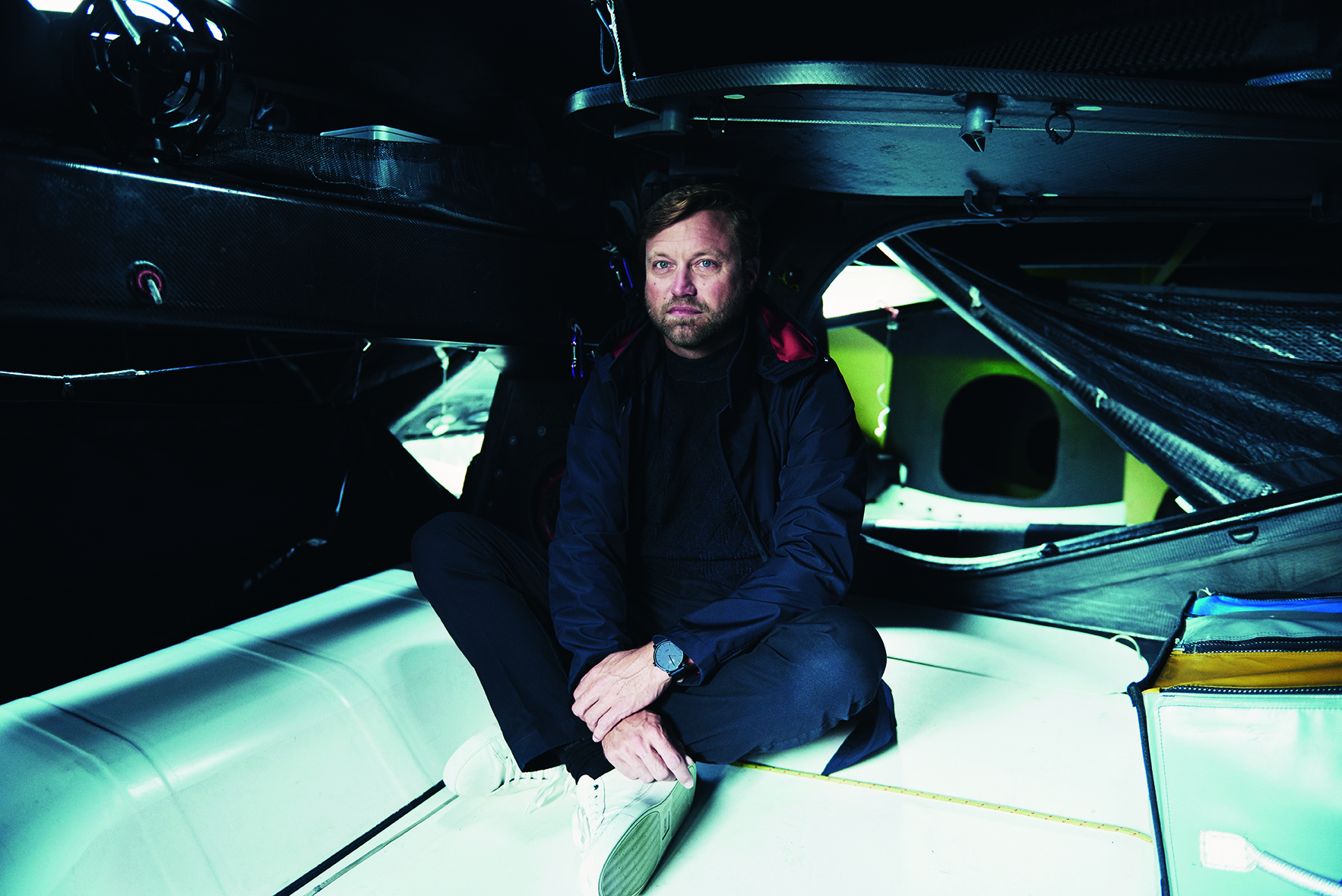
Konstantin Grcic: I loved following the race via the videos you made on board explaining everything. You were very unlucky to have lost the foil, and that one in particular – I know most of the racing is done on that side for the Globe. You would have had a great chance of winning with two foils rather than one!
Alex Thomson: The videos were a great thing to do. When you communicate in that way you get feedback. Every time I put a video on Facebook, I would get thousands of comments from the team about how I had inspired other people, who in turn inspired me.
It feels like such a long time since we first met in New York. I remember back then I didn’t really know whom I would be meeting. I thought it would be an ‘artist’, someone who would come up with a completely impractical idea, not someone down-to-and humble. We connected immediately.
KG: The conversation was there straight away – but then not many people can speak so clearly, and in a way that creates a great enthusiasm about what they do. That conversation, in the restaurant, gave me the first clues for this project.
AT: I remember being so happy with you and your ideas. People often say to me that the way the boat looks is not important, but I think it’s critical. Our boat was voted the most beautiful in France, which is a big deal when it’s an English boat with German sponsors and a German designer. It created this impression that we were peerless and I can’t tell you what that means to the team. Obviously they are involved in the physical side with the build, but the look of the boat and how other people see it creates an emotional bond that you wouldn’t have with most boats.
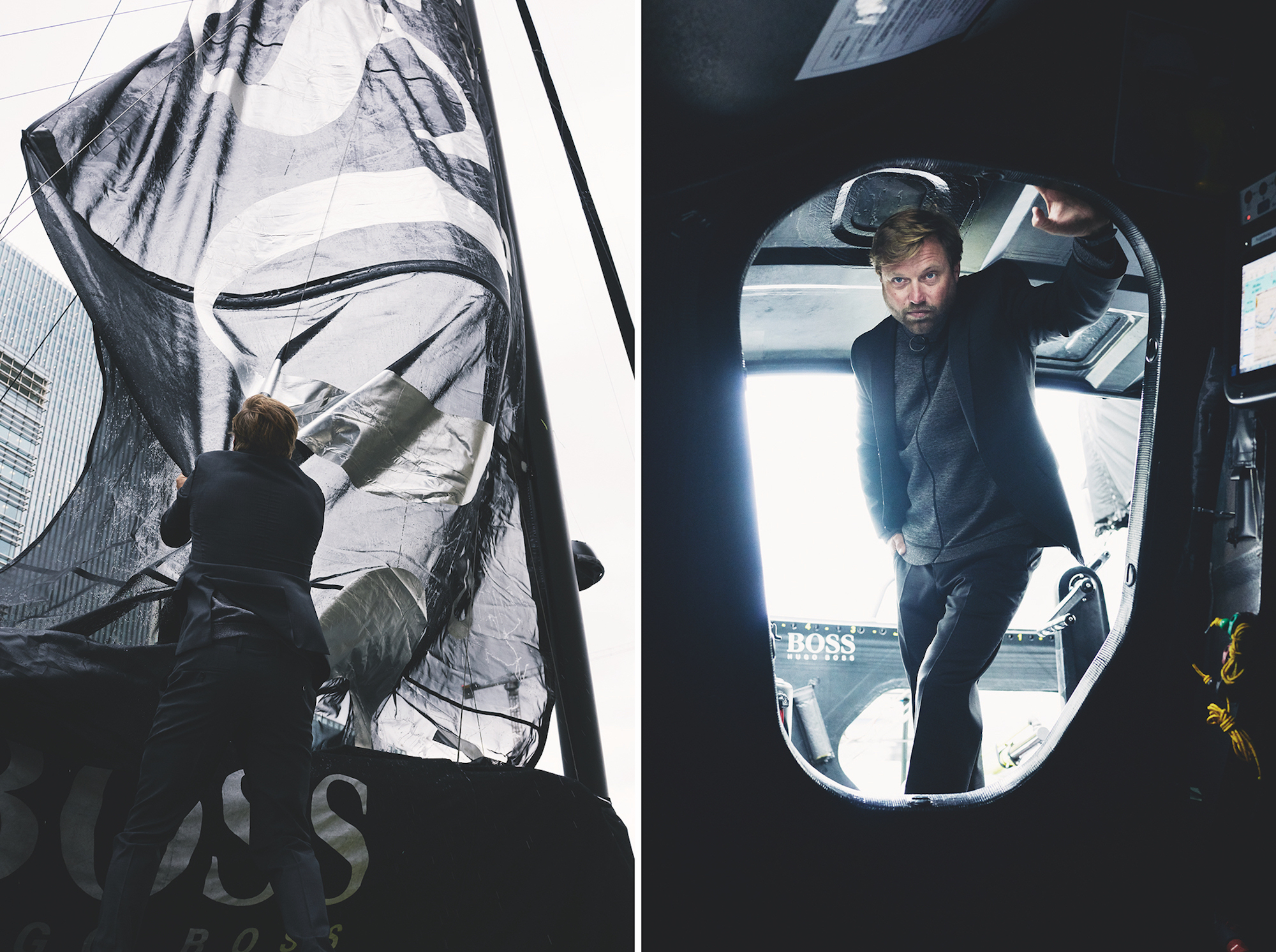
KG: I take that as a huge compliment. The colour, the logos and the style aren’t just decoration. They have to hit the right tone, to capture something in this design that the team really identifies with. And it has to have this psychological element that when you’re on the starting grid, you’ll feel powerful with your boat. Of course, this is something I’m familiar with as a designer – the psychology of form, of design. It’s fascinating what a difference it makes. It was such a challenge to follow your last boat, the completely silver one. But then we found a way to make the new boat all black. Technically it was challenging [the boat is glued together with a resin which is cooked at 80°C; if the boat reaches this temperature, which is possible in the tropics, it could begin to fail structurally]. We worked with a company to develop paint that could reflect light in the same way white paint would. It was nice how an initially purely aesthetic decision actually became a project that we developed together, creating something special and unique.
AT: And then there was the cockpit too. We spent so much time and energy in the previous Vendée Globe trying to make the boat go fast that the last thing we thought about was the comfort of the skipper. Yet the more comfortable you make the skipper the harder they will work. So we brainstormed how to make it more comfortable, how to make the internals work in an effective way. It took six months or so of refining, but what we have now is not so far from what we originally discussed. It was so beneficial to work with someone from a different background who can bring different considerations to the table. It’s definitely something we will do more of next time.
KG: Likewise! It was such a rich experience for me. I’m not an athlete but I love sport and to be able to see behind the scenes, to see the whole process from cladding and building the boat, raising the funds, the discussions you had and the dark hours of failure where you have to pick yourself up, as well as the successes, was something I’ll keep with me for a long, long time. It was unique.
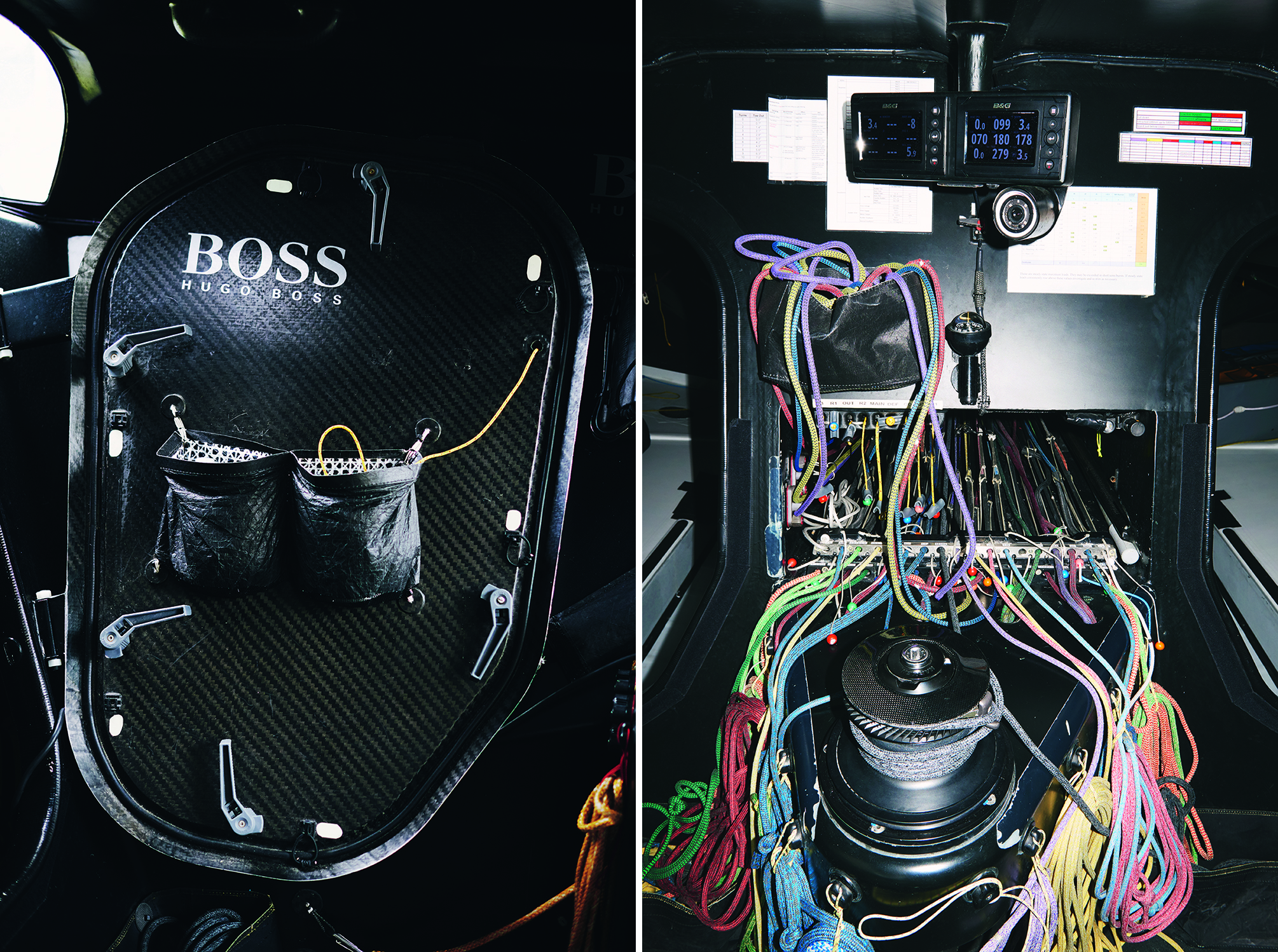
Photography Benjamin McMahon
Styling Dan May
All clothing AW 2017 collection BOSS
Grooming Lee Makin
This is an extract from issue 21 of Port, out now. To buy or subscribe, click here.